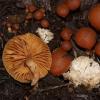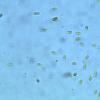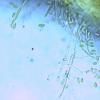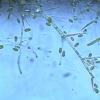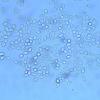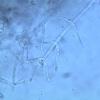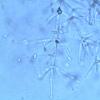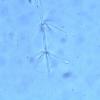
13-01-2013 03:46
 John Plischke
John Plischke
Hello,I found some Tubaria furfuracea today and t

16-01-2013 22:43
Peter ThompsonHappy New Year to you all.I have found a sample of

15-01-2013 22:43
Bonsoir, Good eveningI found this species on a cul

16-01-2013 01:08
Hi to all: Though I do not know his anamorph and I

12-01-2013 18:20
Gernot FriebesHi,in the above mentioned book there should be a d

14-01-2013 00:00
 Yannick Mourgues
Yannick Mourgues
Found today this Mollisia.Can't be able to find th

14-01-2013 01:37
 Pérez del Amo Carlos Manuel
Pérez del Amo Carlos Manuel
Encontrados en agujas sobre el suelo de Pinus pina
on Tubaria furfuracea
John Plischke,
13-01-2013 03:46
 Hello,
Hello,I found some Tubaria furfuracea today and thought they may have Nectriopsis tubariicola on them. I got a new microscope Leica DM1000 with a Leica camera and thought it would be a great time to try it. The software that is supposed to measure the spores will no work so I need to order a reticule so for now I can not provide any measurements. The description I have for Nectriopsis tubariicola says ascospores 12-16 X 3-4um, 2 celled, fusiform. So what else could this be? Photos taken with melzers.
Thank you,
John
Christian Lechat,
13-01-2013 07:54

Re : on Tubaria furfuracea
Hello John,
I think that it is cladobotryum-like or verticillium-like, they are anamorphic states of Hypomyces. Unfortunately without micro it is very difficult to say. Could you please to send a photo of conidiophores and conidia from thinner preparation in water?
Regards,
Christian
I think that it is cladobotryum-like or verticillium-like, they are anamorphic states of Hypomyces. Unfortunately without micro it is very difficult to say. Could you please to send a photo of conidiophores and conidia from thinner preparation in water?
Regards,
Christian
John Plischke,
14-01-2013 05:56
Christian Lechat,
14-01-2013 07:29

Re : on Tubaria furfuracea
Hi John,
it could be the anamorphic state of N. tubariicola
Have nice day,
Christian
it could be the anamorphic state of N. tubariicola
Have nice day,
Christian
Thomas Læssøe,
15-01-2013 13:16
Re : on Tubaria furfuracea
and the field aspect certainly looks right as well. Keep watching the place. You may be lucky to encounter the teleomorph as well. Esp. the anamorphic state is common in Demark
cheers
cheers
John Plischke,
17-01-2013 03:51

Re : on Tubaria furfuracea
Thank you Christian and Thomas. I will keep checking the spot to see if the teleomorph appears.
Thank you,
John
Thank you,
John

